Who is Thailand's most famous 'tourism star'?
Lampang - an ancient city considered as a rising tourist star in Thailand. This place has unique architecture and local culture, a different pace of life from bustling Bangkok or Pattaya.
Thailand attracts travelers with its vibrant nightlife in Bangkok, full moon parties on Koh Phangan Island, and enchanting walking streets in Pattaya.
The Land of Golden Pagodas is also a "magnet" attracting crowds with its healing tourism style and the liberal scenery of mountainous destinations such as Chiang Mai or Pai.
However, few people know that in Northern Thailand there is also a charming riverside city with about 90,000 people living - Lampang.
What is special about Lampang?
Located in the middle of the Wang River valley, just 1 hour drive from Chiang Mai, Lampang city combines ancient features, fresh climate, leisurely pace of life... creating its own attraction.
This is a well-preserved area of historic architecture and plazas dating back to the days when Lampang was the capital of the ancient Lanna kingdom. Century-old wooden temples and teak villas from the late 1800s to early 1900s still remain.
Along the Wang River, the streets in the Kat Kong Ta area are like an open-air museum with a series of Chinese shophouses and typical European gingerbread-style buildings.
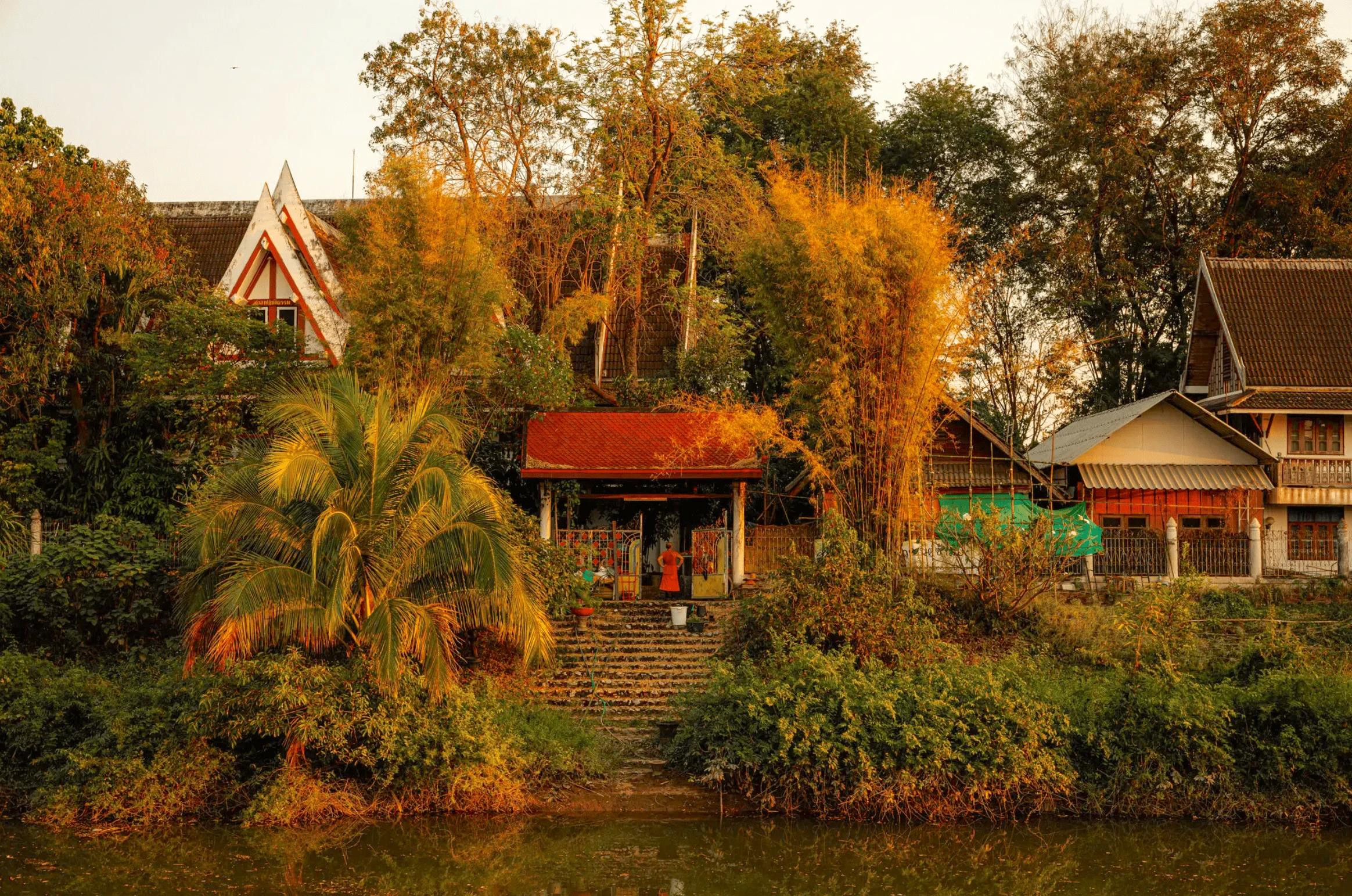
The charm of Lampang does not lie in the entertainment activities and attractions built to serve tourists, but comes from the simple things the city inherently has.
Shophouses have evolved into shops and cafes. Pottery shops are great places to shop for gifts.
Even horse-drawn carriages – the main means of transport for tourists today – were originally the main means of transport for train passengers after the station opened in 1916.
What impresses tourists
Share on the sheetNew York Times,Patrick Scott describes his journey to Lampang with his wife on a four-carriage train. The train departs from Chiang Mai and costs less than $1 per passenger. The trip takes 2.5 hours, passing through a forested valley nestled in the city.
In Lampang, you can find dozens of guesthouses and hotels for under $50/night.
"We were lucky to have a spacious room at Kanecha's Home - a centrally located guesthouse with a view of the Wang River and Ratsada Phisek Bridge," Patrick Scott shared.
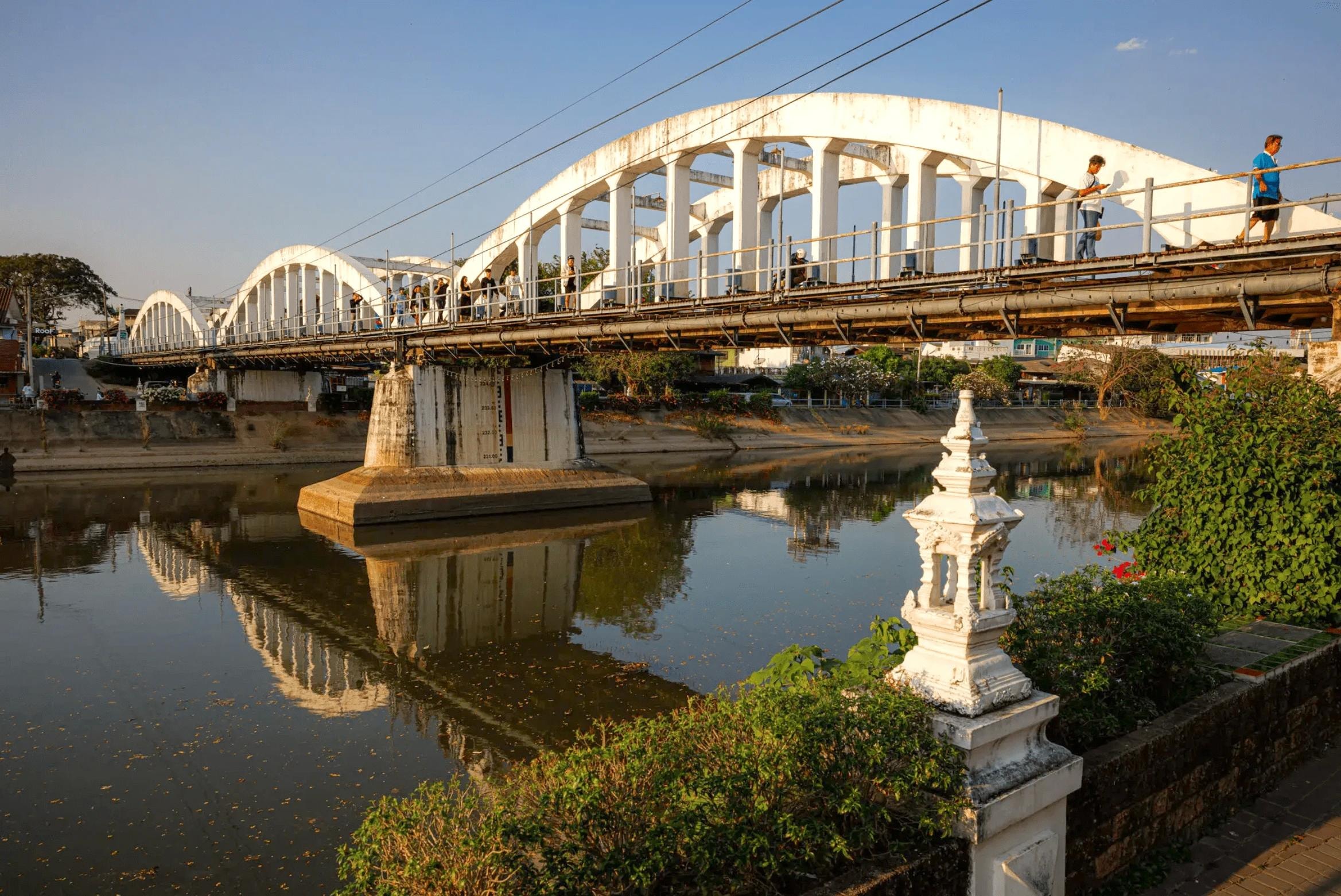
He and his wife cycled along a quiet riverside path, where the silver spires of a temple reflected their reflections. They found a delicious version of Khao Soi, a signature dish of northern Thailand, at the roadside eatery Jay Jay Chan. The total bill was 120 baht (about $3.40).
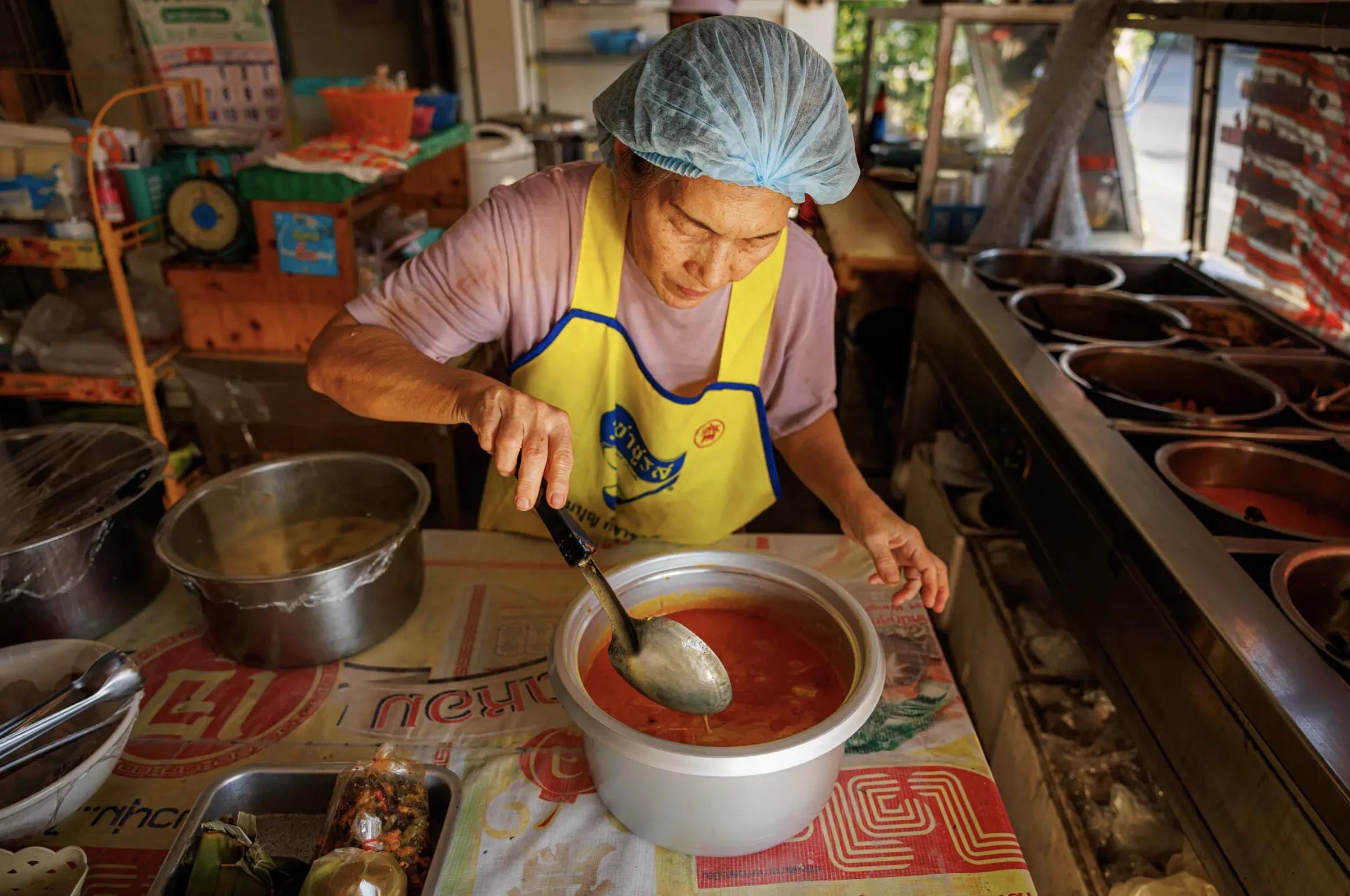
After the meal, Patrick Scott and his wife strolled through the city, strolling through the tree-lined square, past a multi-story temple with three tall teak pillars that locals wrapped in colorful ribbons to pray for a good start to 2024.
"When we stopped at the sidewalk flower stall, a man named Reangprakaiy Decha (39 years old) nodded in greeting. Reangprakaiy shared that his family has been selling flowers for locals and tourists to offer to the temple for 50 years," Patrick Scott recalled.
Explaining why the city is so strangely peaceful and friendly, Reangprakaiy revealed that it has to do with the pervasive power of the Buddha statue in the area.
"We always believe that the invisible power of this Buddha statue has spread and protected the Thai people to be peaceful and happy," Reangprakaiy said.
Images of roosters everywhere
Another interesting thing about this land, Lampang is also the cradle of bowls painted with roosters, often seen in luxury or popular restaurants in Thailand or used in family meals.
Wandering on the streets in the center of Lampang, we can see the image of a rooster anywhere, from the potted plants or lamp posts along the sidewalk, from manhole covers to traffic circles...
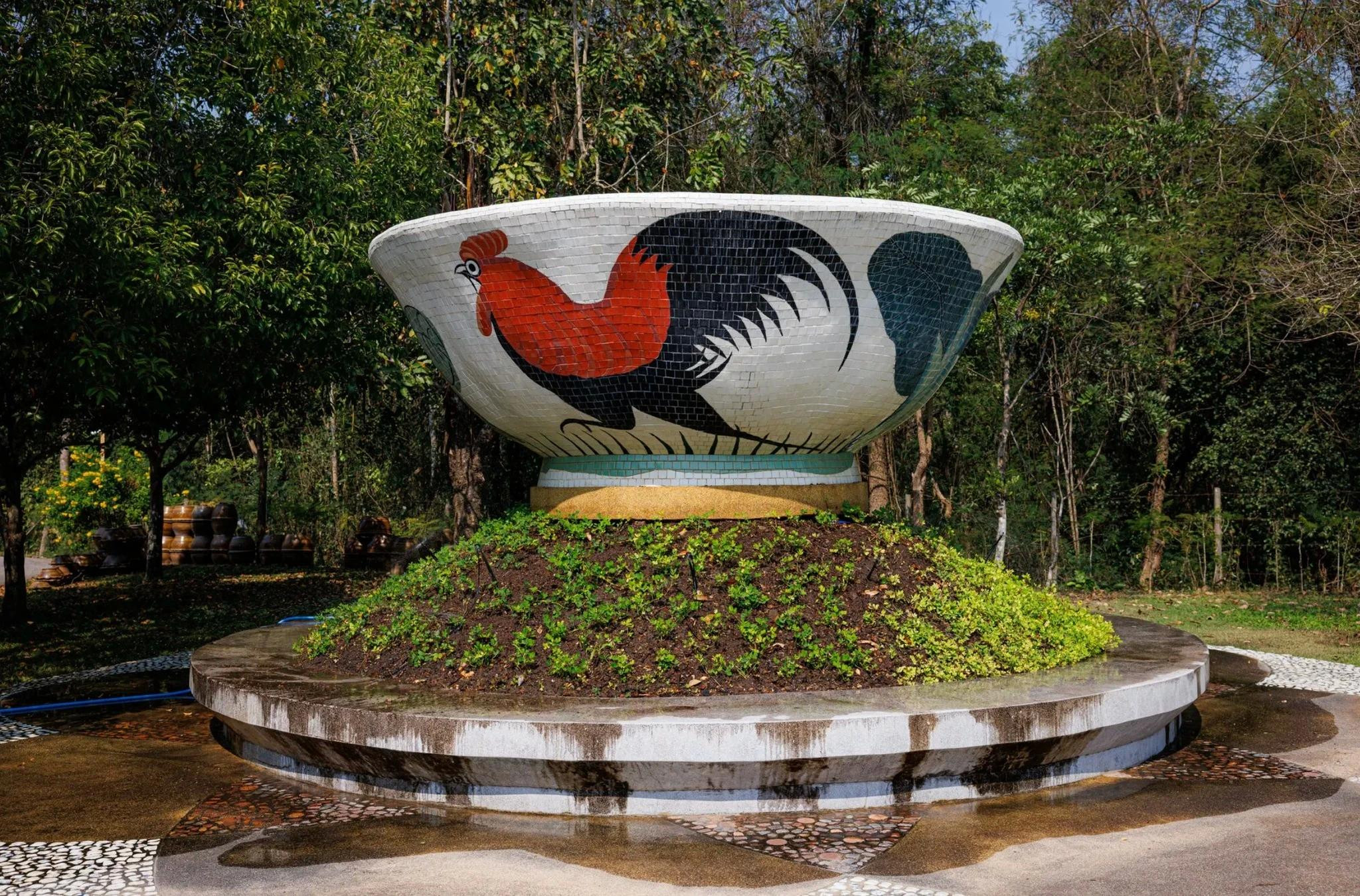
Here, you have the opportunity to visit some pottery kilns and witness the production process of these famous bowls.
Explaining the rooster image appearing everywhere in the city, Thai people tell the story of Buddha coming to town and god Indra disguised himself as a rooster to go begging for alms.
Meanwhile, another explanation is found at Dhanabadee Ceramic - a local history museum in Thailand, which is said to be the original source of the rooster-shaped bowls popular in Lampang.
The local guide said that in the 1950s, the factory's founder, who came from China, discovered that the local white kaolin mineral was ideal for making pottery. He opened the factory and took inspiration from motifs that had been popular in China for centuries to hand-paint chickens on cups and bowls.
Lampang chicken bowls quickly spread throughout Thailand over the decades. There are now many workshops and factories producing chicken-shaped tableware and many other ceramic products.
Temples that fascinate tourists
Like other big cities in Thailand, Lampang has many temples and pagodas. However, the temples and pagodas here have ancient Myanmar architecture, typically the famous Buddhist temple Wat Phrathat Lampang Luang located in the suburbs 20 km from the city center.
This structure is said to be one of the oldest teak buildings in Thailand.
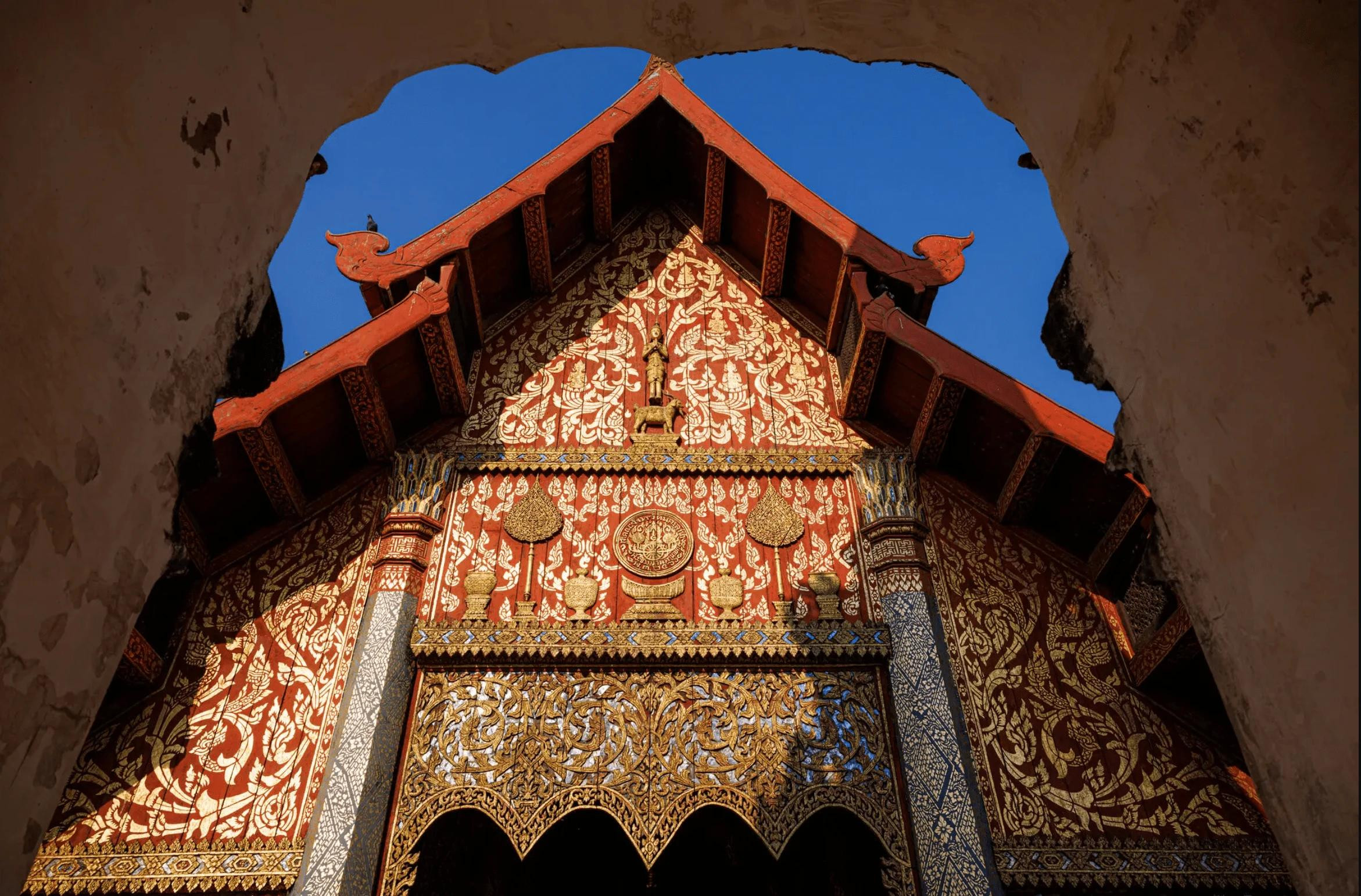
The temple is located on a high place with a peaceful and poetic mountain landscape. The highlight of the temple is the large gold-plated tower located in the central area.
Around the large tower are many small Buddha statues arranged on all four sides. Under the curved tiled roofs are rows of bronze bells that occasionally ring out when a gentle breeze blows.
A mysterious string is strung from the top of the 14-story golden-topped stone stupa down to the courtyard, with a string of flowers, bells, Thai flags and orange cloth attached to the bottom of the string. The offerings will be delivered to the top on the first weekend evening of the new year, with the meaning of praying to Buddha for protection and wishing for a good life.
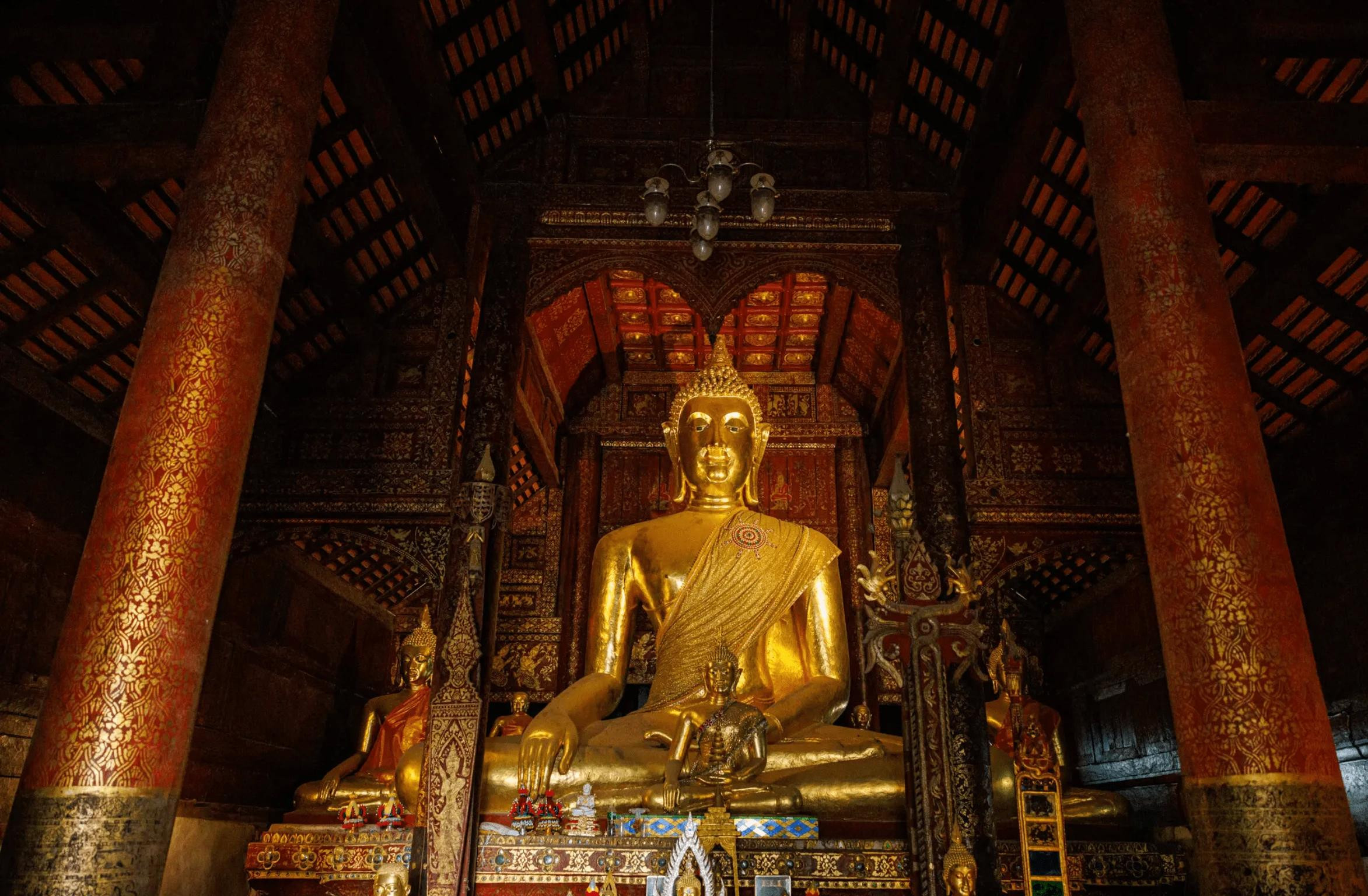
Another must-see stop in Lampang is the “sky temple” Wat Phra Phutthabat Sutthawat.
There are about 20 stupas located on the top of the rocky mountain. Some are three-tiered golden cones, others are shaped like round white bells.
Each temple has gongs or bells, visitors can ring the bells to pray, blending with the chirping of birds and the gentle breeze above.
The scenery and energy of this place is quiet, gentle and mysterious, making many visitors not want to leave.
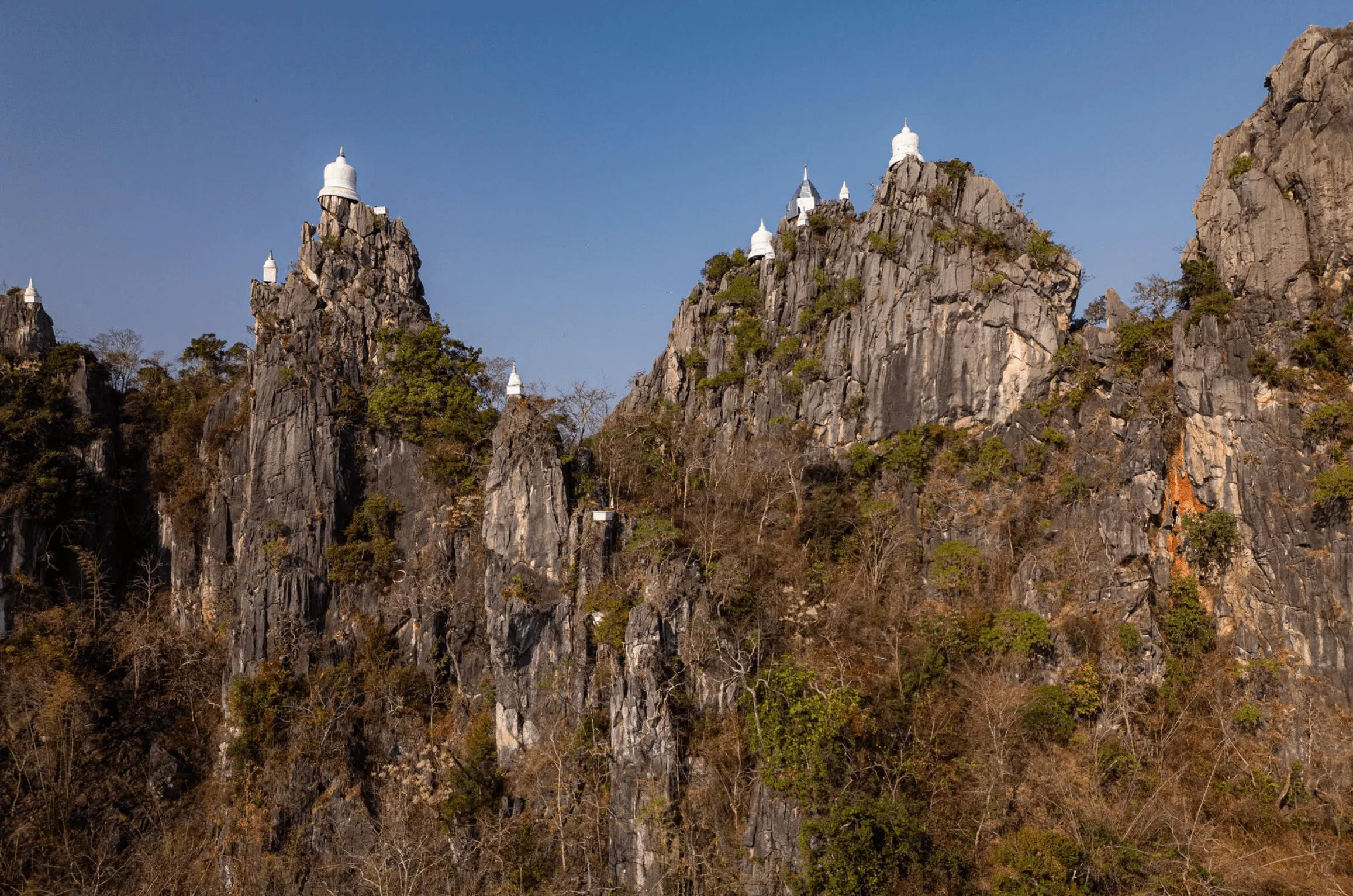
The Travel - Cuisine section presents readers with good books that inspire travel. Not just simple travel trips, each work recounts the journey of discovery and learning many interesting things from new civilizations and places of the authors./.

